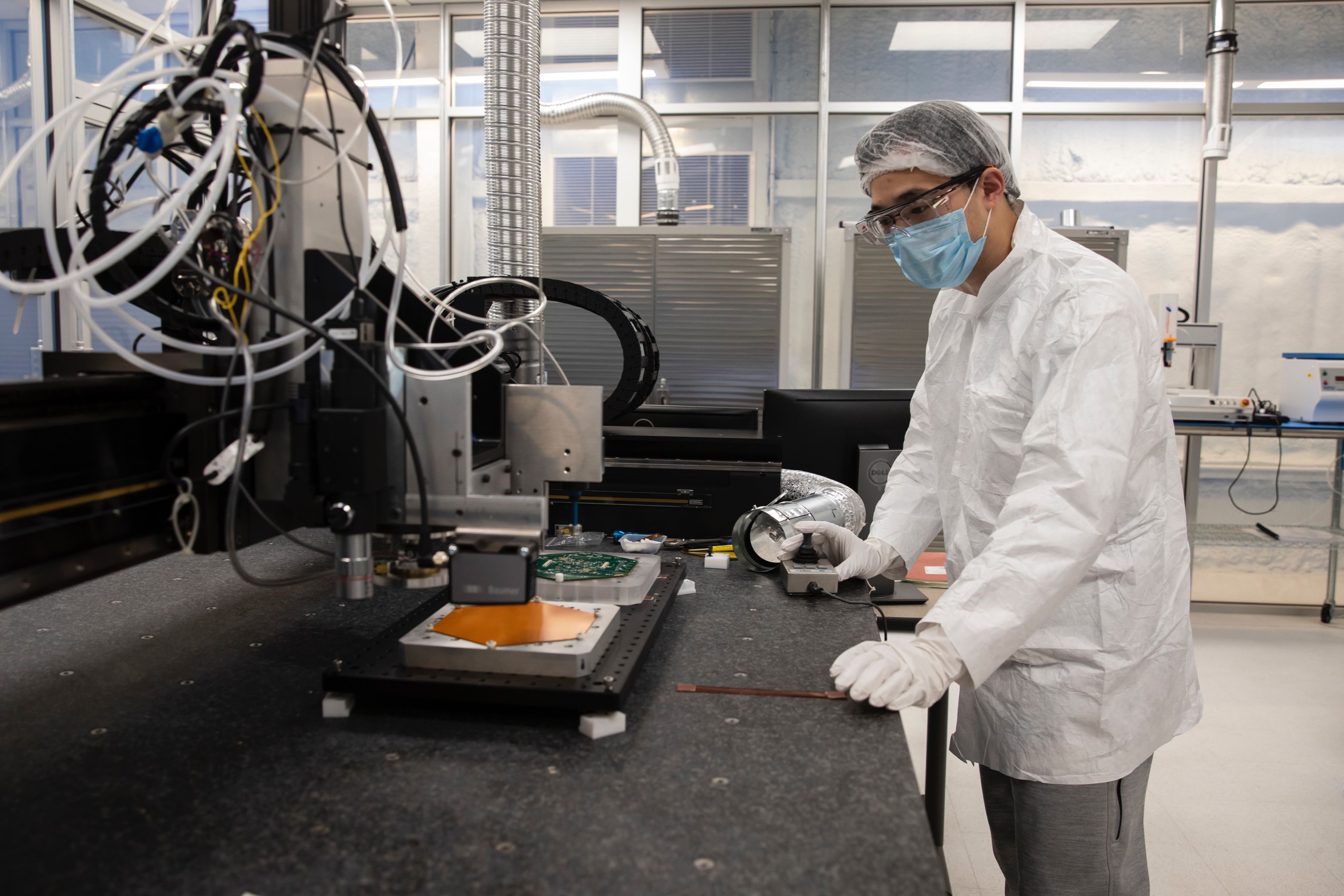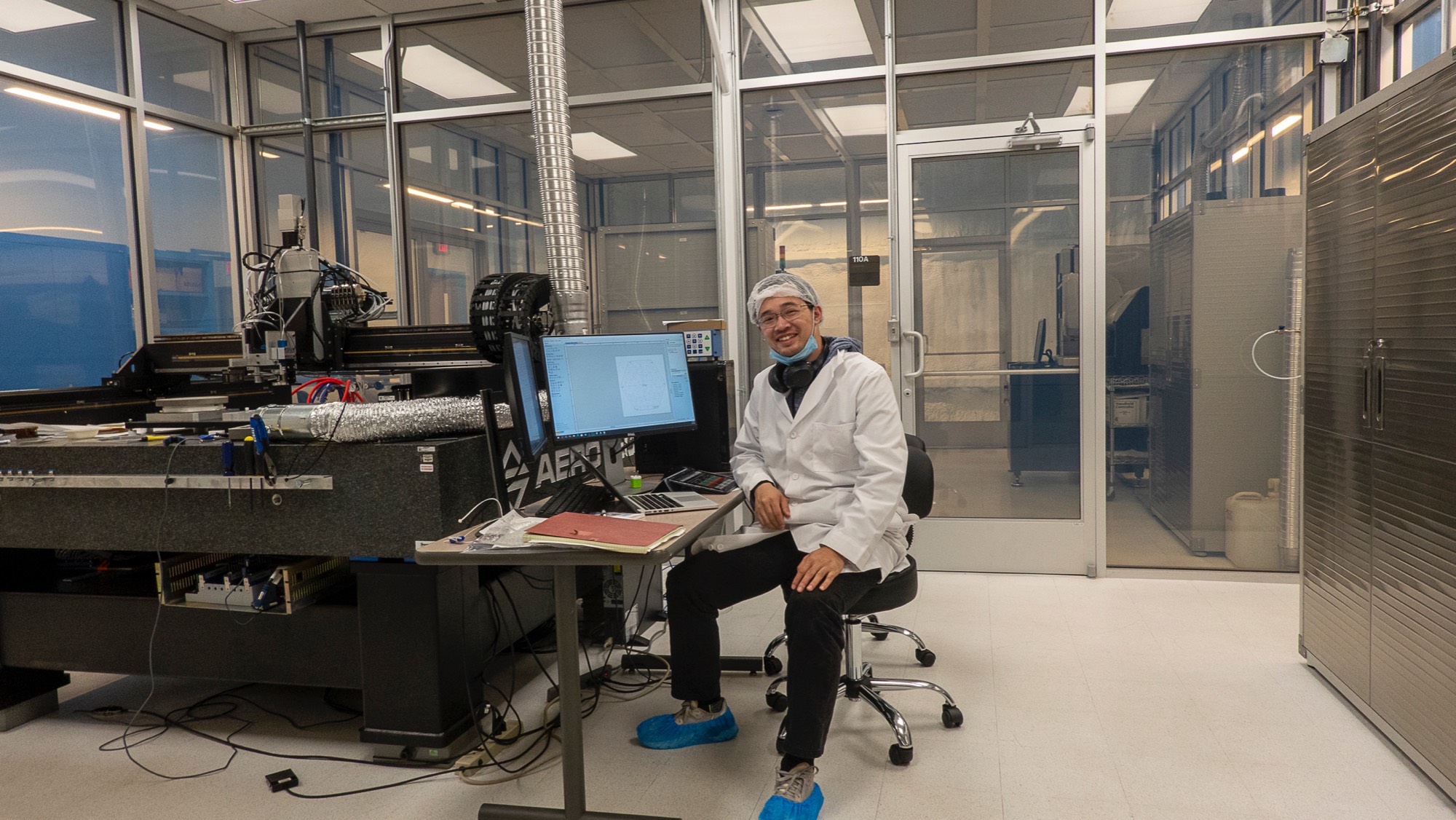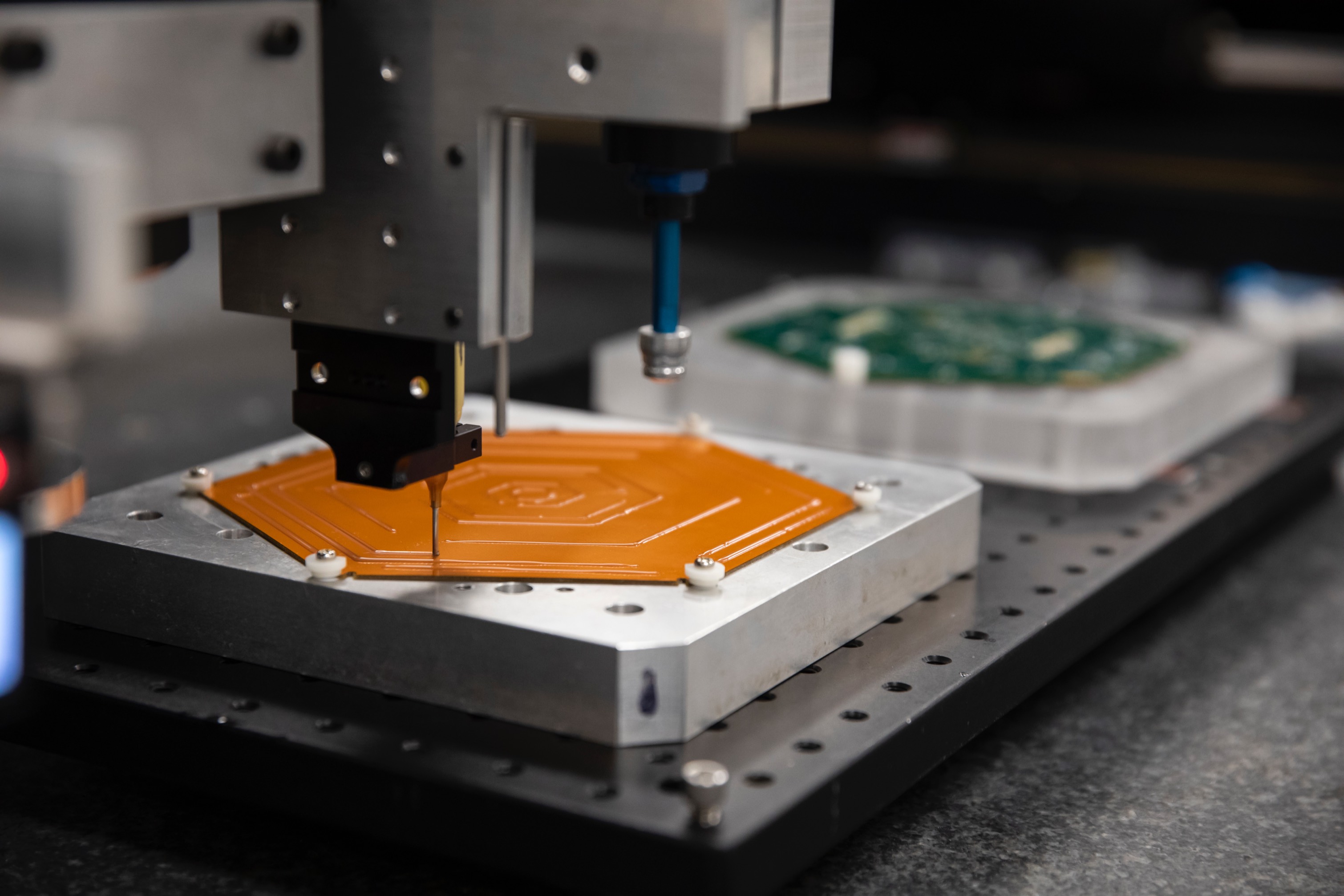High-Granularity Calorimeter (HGCAL)
HGCAL is one of the most ambitious detector projects undertaken, due to the combination of extremely high readout and trigger granularity,coupled with the harsh radiation environment of the CMS endcaps during HL-LHC operation. Two radiation-tolerant materials have been selected: silicon in the high-radiation region and plastic scintillator tiles in the less harsh regions. To mitigate the effects of radiation damage,the silicon sensors must be cooled to about –32°C, which also allows the use of on-tile silicon photomultipliers for the scintillator readout.
HGCAL has around 6.5 million detector channels, divided into 50 layers. The first 28 layers form the electromagnetic section, which is based on hexagonal silicon sensors (maximising the useable surface of 8" circular silicon wafers) divided into hexagonal cells. The sensors are sandwiched between high-density copper-tungsten alloy baseplates on one side and printed circuit boards containing the front-end electronics on the other, and the resulting hexagonal modules are mounted on either side of CO2-cooled copper plates. The following eight layers are similar, forming the front part of the hadronic section of HGCAL, but are single-sided and use a lighter baseplate, while the final 12 layers incorporate both silicon modules and scintillator tiles. The use of both detector technologies optimises the overall cost of the HGCAL whilst maintaining excellent long-term performance.
Prototype development began in 2016, and hexagonal silicon sensors have been built into modules to evaluate the feasibility of the overall design and to study the performance in beams at Fermilab, DESY and CERN. Results from these beam tests compare very well with simulations. Thanks to HGCAL's readout/triggering granularity and timing resolution for showers, the expected performance in terms of energy resolution, particle identification and triggering are all comparable to the present CMS endcap calorimeters – even in the presence of 200 pileup events and after the full radiation exposure expected at HL-LHC. The project has now moved to the final design and prototyping phase, with construction due to start in a couple of years.
The high-granularity calorimeter (HGCAL) is a major upgrade of CMS, and is necessary to maintain excellent calorimetric performance in the endcaps during HL-LHC operations.
Advanced Particle Detector Laboratory
-
Address
TTU Advanced Particle Detector Lab, 1204 S Gilbert Dr, Building 557 Lubbock, TX 79416-2104 -
Phone
806.790.7444 -
Email
sonaina.undleeb@ttu.edu



